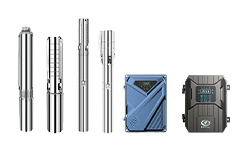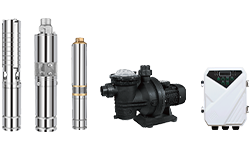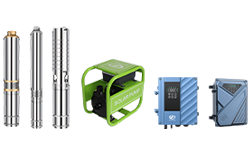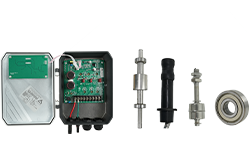Solar micro-inverter is an inverter designed to operate with a single PV module. The micro-inverter converts the direct current output from each panel into alternating current. Its design allows parallel connection of multiple, independent units in a modular way.
Micro-inverter advantages include single panel power optimization, independent operation of each panel, plug-and play installation, improved installation and fire safety, minimized costs with system design and stock minimization.
A 2011 study at Appalachian State University reports that individual integrated inverter setup yielded about 20% more power in unshaded conditions and 27% more power in shaded conditions compared to string connected setup using one inverter. Both setups used identical solar panels.
Solar pumping inverters
Advanced solar pumping inverters convert DC voltage from the solar array into AC voltage to drive submersible pumps directly without the need for batteries or other energy storage devices. By utilizing MPPT (maximum power point tracking), solar pumping inverters regulate output frequency to control the speed of the pumps in order to save the pump motor from damage
Solar pumping inverters usually have multiple ports to allow the input of DC current generated by PV arrays, one port to allow the output of AC voltage, and a further port for input from a water-level sensor.
E-mail/Skype:sales05@diffulpump.com
Tel/WhatsApp:+86 15058288607
Wechat:diffulsales01






















